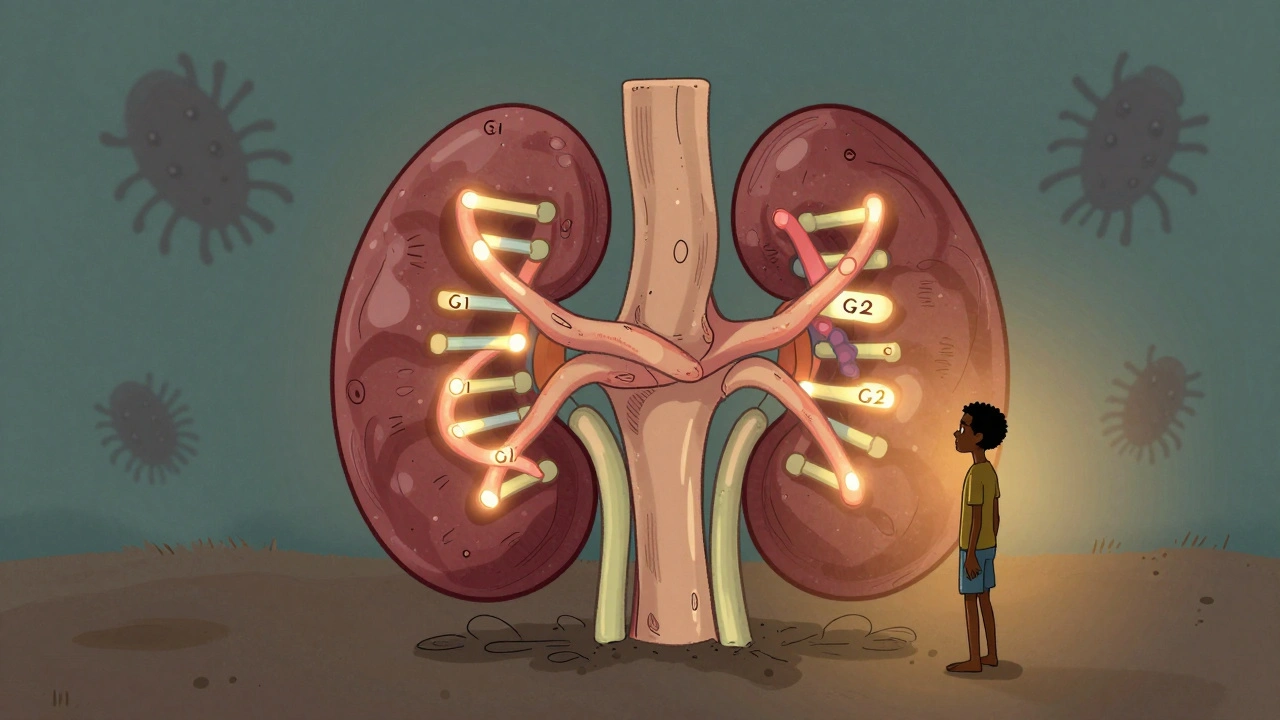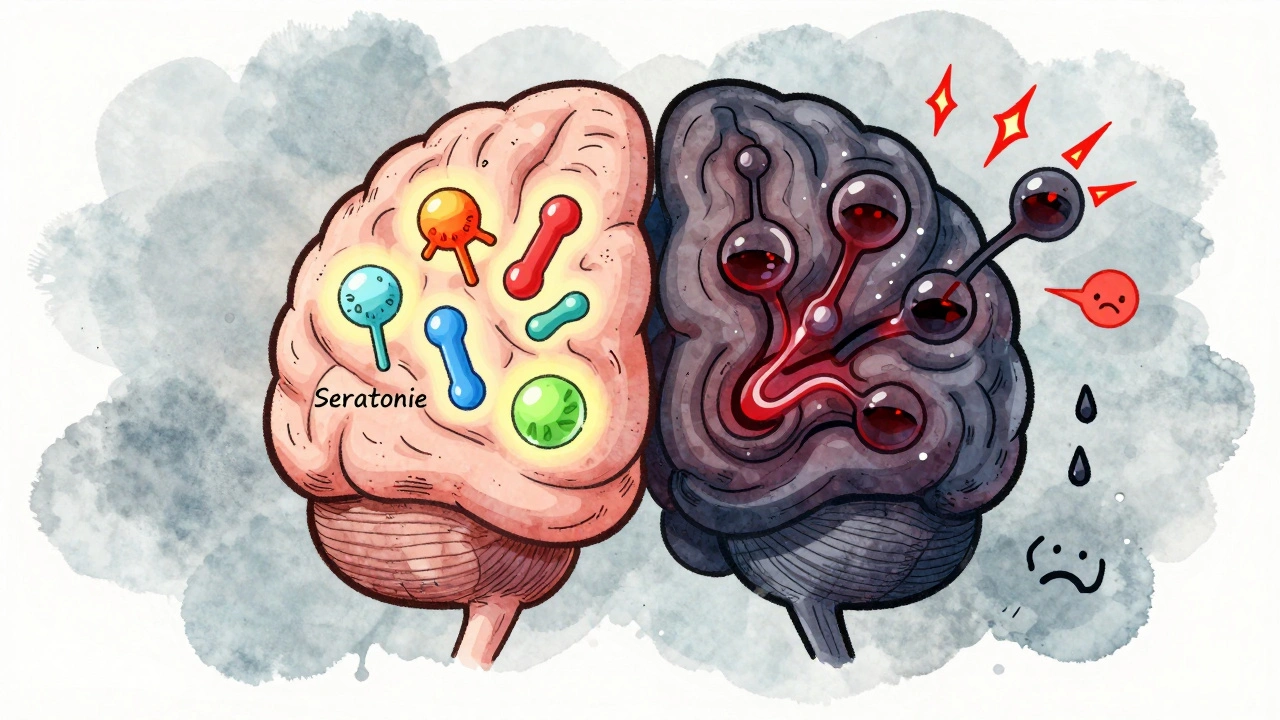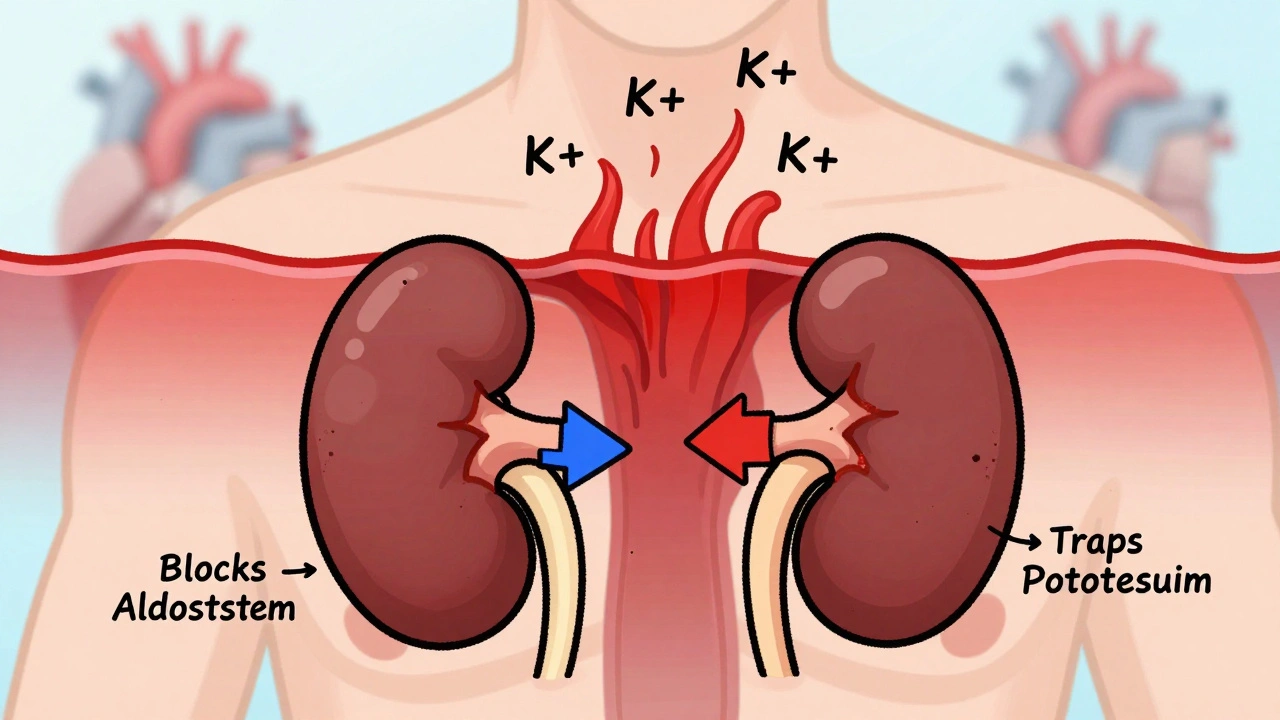Perindopril Dosing Calculator
Determine Your Starting Dose
Important: This calculator provides general guidance only. Always consult your physician for personalized dosing recommendations.
Doses may need adjustment based on your specific health conditions and other medications you take.
Ever wondered why doctors prescribe a single pill to keep your blood pressure in check? The answer lies in how Perindopril erbumine interferes with a chain reaction that makes your vessels tighten. Below we break down the science, the benefits, and the practical details you need to know.
What is Perindopril Erbumine?
Perindopril erbumine is a prodrug belonging to the ACE inhibitor class, designed to treat high blood pressure (hypertension) and reduce cardiovascular risk. Once absorbed, liver enzymes convert it into the active form perindopril, which then blocks the enzyme angiotensin‑converting enzyme (ACE). The drug was first approved in the 1990s and is marketed under brand names such as Coversyl.
How ACE Inhibitors Work
To grasp Perindopril’s impact, you need a quick tour of the Renin‑Angiotensin‑Aldosterone System (RAAS). This hormonal loop regulates blood volume and vessel tone. When blood pressure drops, the kidneys release renin, an enzyme that chops a protein called angiotensinogen into angiotensin I. ACE then converts angiotensin I into angiotensin II, a potent vasoconstrictor that narrows arteries and triggers the adrenal glands to secrete aldosterone. Aldosterone prompts the kidneys to retain sodium and water, raising blood volume and pressure.
ACE inhibitors, like Perindopril, block the step that creates angiotensin II. No angiotensin II means vessels stay relaxed, blood volume stays lower, and the heart doesn’t have to work as hard.
The Renin‑Angiotensin‑Aldosterone System (RAAS) Explained
Think of RAAS as a thermostat for your circulatory system. When the "temperature" (blood pressure) falls, the thermostat fires up renin, which eventually leads to a rise in core temperature via angiotensin II. By turning off the thermostat’s heating element (ACE), Perindopril lets the system stabilize at a healthier set point.
In addition to lowering angiotensin II, ACE inhibition raises levels of bradykinin, a peptide that also dilates blood vessels and promotes nitric oxide release. This double‑action-reducing constriction and boosting dilation-makes ACE inhibitors especially effective for chronic hypertension.
Perindopril’s Specific Mechanism of Action
Once Perindopril erbumine reaches the bloodstream, the liver’s carboxyl‑esterases cleave its ethyl ester group, turning it into the active perindopril acid. This active form binds tightly-and reversibly-to the zinc ion at ACE’s active site, preventing the enzyme from converting angiotensin I.
Because Perindopril’s binding affinity is high, even low daily doses (4-8mg) achieve sustained ACE inhibition throughout the day. The drug’s half‑life (around 3hours) is extended by its active metabolites, which continue to block ACE for up to 24hours, allowing once‑daily dosing.
By curbing angiotensin II, Perindopril reduces systemic vascular resistance, lowers systolic and diastolic pressures, and eases the workload on the left ventricle. Over time, this can reverse left‑ventricular hypertrophy and improve arterial compliance.

Clinical Benefits for Blood Pressure Control
Large trials such as the ASCOT‑LLA (Anglo‑Scandinavian Cardiac Outcomes Trial - Lipid Lowering Arm) showed that Perindopril, alone or combined with a thiazide diuretic, cut the risk of fatal and non‑fatal cardiovascular events by up to 20% compared with placebo. Patients typically see a 10‑15mmHg drop in systolic pressure within two weeks.
Beyond the numbers, Perindopril offers:
- Improved renal outcomes in diabetic patients because lower intraglomerular pressure reduces proteinuria.
- Reduced incidence of stroke, especially in older adults, owing to smoother cerebral blood flow.
- Better heart‑failure management when combined with beta‑blockers, as the drug prevents maladaptive remodeling.
Dosage, Pharmacokinetics, and Metabolism
Typical starting doses: 4mg once daily for mild hypertension, titrated up to 8mg if needed. For patients with chronic kidney disease, the initial dose may be reduced to 2mg.
Key pharmacokinetic traits:
- Bioavailability: ~80% after oral administration.
- Peak plasma concentration: 1‑2hours post‑dose.
- Half‑life of active metabolite: ~18hours, supporting once‑daily regimen.
- Excretion: ~40% renal, the rest via bile.
Because the drug relies on hepatic conversion, strong CYP3A4 inhibitors (e.g., ketoconazole) can modestly raise plasma levels, while enzyme inducers (e.g., rifampicin) may lower them.
Common Side Effects and Safety Tips
Most patients tolerate Perindopril well, but be aware of:
- Cough - a dry, persistent cough stems from bradykinin accumulation; switching to an ARB (e.g., Losartan) may help.
- Hypotension - especially after the first dose or when combined with diuretics.
- Hyperkalemia - monitor potassium if you’re on potassium‑sparing diuretics.
- Angioedema - rare but serious swelling of lips, tongue, or airway; seek emergency care.
Pregnant women should avoid ACE inhibitors due to fetal kidney toxicity. Regular blood tests for electrolytes and kidney function are recommended during the first few months.

How Perindopril Stacks Up Against Other ACE Inhibitors
| Attribute | Perindopril | Captopril | Enalapril |
|---|---|---|---|
| Typical Daily Dose | 4-8mg | 25-75mg | 5-20mg |
| Half‑life (active metabolite) | ≈18h | ≈2h | ≈11h |
| Bioavailability | ~80% | ~70% | ~60% |
| Onset of Action | 1-2h | 30min | 1h |
| Common Side‑Effect (Cough) | Low‑moderate | High | Moderate |
Perindopril’s longer half‑life and lower cough incidence make it a convenient first‑line option for many clinicians, especially in patients who struggle with medication adherence.
Frequently Asked Questions
Frequently Asked Questions
Can I take Perindopril with a diuretic?
Yes. Combining an ACE inhibitor with a thiazide diuretic often yields better blood‑pressure control, but your doctor will monitor electrolytes and kidney function closely.
How long does it take to see results?
Most patients notice a reduction in systolic pressure within 1-2 weeks. Full therapeutic effect may take up to 4 weeks as the vascular system remodels.
What should I do if I develop a persistent cough?
Talk to your physician. They may lower the dose or switch you to an angiotensin‑II receptor blocker (ARB) such as Losartan, which doesn’t increase bradykinin.
Is Perindopril safe for people with kidney disease?
It can be used, but dose adjustments are needed and renal function must be checked regularly. In severe renal impairment, alternative agents may be preferred.
Can I stop the medication abruptly?
Stopping suddenly may cause rebound hypertension. Always taper under medical guidance.
Understanding how Perindopril erbumine works gives you a clearer picture of why it’s a cornerstone of modern hypertension therapy. Talk to your healthcare provider to see if this ACE inhibitor fits your treatment plan.








Nickolas Mark Ewald
October 16, 2025 AT 19:28Perindopril works by blocking ACE and relaxing blood vessels.
Tom Green
October 26, 2025 AT 01:41Right, by inhibiting the conversion of angiotensin I to angiotensin II the drug reduces vasoconstriction, which in turn lowers both systolic and diastolic pressure, and the downstream drop in aldosterone helps keep fluid balance in check.
Emily Rankin
November 4, 2025 AT 06:54When you think about blood pressure, imagine a garden hose that can tighten or loosen at the flick of a switch.
Perindopril essentially flips that switch toward a gentle flow, and the science behind it is both elegant and reassuring.
The molecule starts its journey as a prodrug called perindopril erbumine, silently cruising through the gut until the liver’s enzymes awaken it.
Once activated, it latches onto the zinc ion in the active site of ACE, preventing the enzyme from crafting the powerful vasoconstrictor angiotensin II.
With less angiotensin II around, the smooth muscle in the arteries relaxes, and the heart doesn’t have to pump as hard to push blood through.
At the same time, bradykinin levels climb, adding an extra layer of vasodilation that feels like a calm breeze on a hot day.
Clinical trials have shown that patients on Perindopril often see a 10‑15 mmHg drop in systolic pressure within two weeks, a change that can translate into years of life saved.
The drug’s long‑acting metabolite sticks around for about 18 hours, so a single daily pill is enough to keep the pressure steady.
Because it works gently, the notorious dry cough that plagues some ACE inhibitors appears less often, making adherence easier for many people.
In people with diabetes, the reduced intraglomerular pressure can lessen protein leakage, offering kidney protection beyond just blood pressure control.
For older adults, smoother cerebral blood flow means a lower chance of stroke, a benefit that often goes unnoticed until you see the numbers.
If you combine Perindopril with a thiazide diuretic, the duo can knock down resistance that sometimes develops with monotherapy.
However, you still need to keep an eye on potassium levels, especially if you’re also taking potassium‑sparing agents.
And never, ever stop the medication abruptly, because the rebound surge in angiotensin II could send your pressure soaring back up.
Overall, Perindopril stands out as a reliable cornerstone in hypertension therapy, blending potency with a tolerable side‑effect profile.
Rebecca Mitchell
November 13, 2025 AT 13:08So the drug just blocks one enzyme and the rest follows naturally
Roberta Makaravage
November 22, 2025 AT 19:21People should think twice before dumping a cheap pill on patients without considering the long‑term impact 🌍💊 Health isn’t just a market, it’s a responsibility.
Russell Abelido
December 2, 2025 AT 01:34It’s true that the broader picture matters, and when you see the data on reduced cardiovascular events, it feels hopeful 😊
Steve Holmes
December 11, 2025 AT 07:48When choosing a dose you start low, watch the blood pressure response, consider kidney function, adjust for age, and remember the timing of the peak effect, all while keeping the patient’s lifestyle in mind.
Katie Henry
December 20, 2025 AT 14:01Adhering to a meticulously titrated regimen not only optimizes therapeutic outcomes but also empowers patients to take an active role in safeguarding their cardiovascular health.